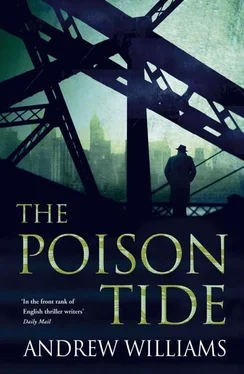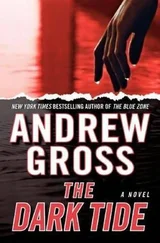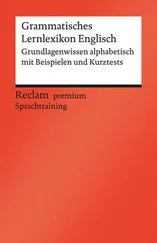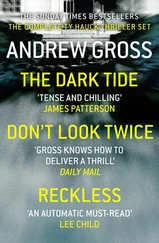The German General Staff did consider using biological weapons against soldiers and civilians. On 7 June 1916 the naval attaché in Madrid, Commander Krohn, sent a telegram suggesting the contamination of rivers with cholera bacilli, but his proposal was rejected. A few months later the Staff was presented with another, this time for the spreading of plague. A military doctor, Oberstabsarzt Winter, argued the dropping of plague bacilli from Zeppelins on English ports would infect local populations and cause general panic. The idea seems to have interested the new Chief of the General Staff, General Ludendorff, but it was categorically ruled out by the Surgeon General. ‘If we undertake this step,’ he wrote, ‘we will no longer be worthy to exist as a nation.’
There were many rumours of German biological attacks on both Allied soldiers and civilians. In 1917 the British Home Office instructed the police to take precautions against anthrax. A few months later civil servants reported information from a French source, ‘that the enemy had inoculated a large number of rats with plague, and they intended to let them loose in the United Kingdom from submarines and aeroplanes.’
The General Staff considered the infection of horses and other livestock as an attack on military supplies and a legitimate act of war. Nadolny’s biological warfare programme grew in scope and reach with Section P agents operating not just in the United States but against Allied interests in Rumania, Spain, Norway and South America, too. This campaign is covered in detail in Thomas Boghardt’s book, Spies of the Kaiser: German Covert Operations in Great Britain during the First World War .
Culturing and then infecting the animals required more effort than many German agents were prepared to make. After the war scientists in Britain and elsewhere were able to mill anthrax spores to something like a dust that could be used more effectively in a high explosive device. In 1925 Winston Churchill wrote of ‘pestilences methodically prepared and deliberately launched upon man and beast… Anthrax to slay horses and cattle, Plague to poison not armies only but whole districts — such are the lines along which military science is remorselessly advancing.’ No doubt this thought was in the mind of Prime Minister Churchill when in 1942 he authorised the testing of an anthrax bomb that might be dropped on Nazi Germany. But it was the Japanese War Ministry that was to invest the most money and time in the development of a biological warfare programme during the Second World War. Within the walls of its Pingfan Institute, three thousand scientists, technicians and soldiers worked on a range of diseases to be used in an offensive, including typhus, typhoid, cholera, plague, smallpox, tuberculosis, glanders and anthrax. They concluded that anthrax bombs would be the most effective and more than two thousand were developed and tested experimentally.
Anthrax is still regarded as one of the most potent biological threats. The accidental release of anthrax spores from a weapons facility in Sverdlovsk in the former Soviet Union in 1979 resulted in seventy-nine cases of anthrax infection and sixty-eight deaths. Scientists are particularly concerned about the release of spores in an aerosol by a terrorist group or in a dirty explosion. Colourless and odourless, the spores might travel many miles before disseminating. In 1993 a report by the US Congressional Office of Technology Assessment estimated the release of 100 kilograms of anthrax spores upwind of Washington, DC, would result in anything from to 130,000 to three million deaths — a death rate that would match the impact of a hydrogen bomb on the district.
For the effects of anthrax and the history of its use I consulted a number of books and medical papers, and I am grateful to Professor Alastair Hay of Leeds University who spared time to go over some of these areas with me. More on the secret history of chemical and biological warfare can be found in A Higher Form of Killing by Robert Harris and Jeremy Paxman.
‘A higher form of killing’ was the epithet Fritz Haber used to describe his invention of poison gas. Although there is no evidence to suggest Haber met Anton Dilger, he did have some contact with Count Nadolny. In The Poison Tide Haber expresses his firmly held view that in war the scientist belongs to his country and must bend his efforts to victory. The Anton Dilger of my story stands shoulder to shoulder with him in contending talk of a humane death is nonsense and there is no ethical difference between blowing a man to pieces in no-man’s-land and poisoning him in a gas attack. Clara Haber’s opposition to her husband’s work is well documented and is believed to have been the significant factor in her decision to commit suicide at their home in Berlin, just days after the first German gas release on the Western Front.
Dr Anton Dilger died in Madrid of complications associated with Spanish influenza a few weeks before the end of the war. By the autumn of 1918, the State Department in Washington was actively seeking his arrest with a view to indicting him for treason. Carl Dilger always believed his brother was murdered by German intelligence ‘because he knew too much’. The most valuable source for the little that is known of Dilger’s life and death is Robert Koenig’s biography The Fourth Horseman: One Man’s Mission to Wage the Great War in America.
Captain Franz von Rintelen enjoyed a longer and more peaceful life. After three years’ imprisonment in America, he returned first to Germany then to England, where he died in 1949. The story of the espionage network he built using the personnel and contacts of the German shipping lines, his unholy alliance with Irish America, Black Tom and his campaign of sabotage can be found in his own colourful but self-serving memoir The Dark Invader. Many characters who appear in The Poison Tide are also there, including his contact to the Irish on the docks, Paul Koenig, and Dr Walter Scheele, the inventor of the cigar bomb the network used against British ships and American munitions factories. Another valuable source for the activities of the saboteurs was Captain Thomas Tunney’s account of his time as the head of the New York Police Department Bomb Squad, Throttled! The Detection of the German and Anarchist Bomb Plotters. Chad Millman’s The Detonators offers a good general account of the campaign and the post-war attempt to bring the German agents and their American collaborators to justice. From all of these books I took as much as was useful for my story.
The Poison Tide is set at a time of some confusion in both the British and German intelligence services with rival agencies competing for influence and resources. Today, the British Secret Intelligence Service — or MI6 — is the principal body responsible for the gathering of information from overseas, providing, in its own words, ‘the global covert capability to promote and defend the national security and economic well-being of the United Kingdom’. But at the beginning of the First World War it was just one among a number of intelligence agencies.
Founded as the Foreign Section of the Secret Service Bureau in 1909, its first chief was the redoubtable Commander, later Captain, Mansfield Cumming of the Royal Navy. It was Cumming’s habit of initialling classified documents in green ink as ‘C’ that gave rise to the tradition of the head of the Service being referred to as C. By 1914 the ‘SS Bureau’ or ‘Secret Service’ was operating from a large flat at 2 Whitehall Court in the centre of London, a short distance from the Admiralty and the War Office. Its cramped premises at the top of a mainly residential block reflected its lowly status. Cumming had to fight to prevent the SS Bureau being swallowed up by the War Office’s Military Intelligence Directorate. During the war years it was referred to variously as the ‘SS Bureau’, the ‘Secret Service’, the ‘Special Intelligence Service’, even ‘C’s Organisation’, and its official designation was MI 1(c). For simplicity I elected in The Poison Tide to refer to MI 1(c) as the ‘Secret Service Bureau’, the ‘Bureau’ or the ‘Service’, and to Cumming and ‘Blinker’ Hall of Naval Intelligence by their final ranks of captain and admiral respectively. More details of the foundation of the Service and its early operations can be found in the official history written by Keith Jeffery: MI6: The History of the Secret Intelligence Service 1909–1949 ; Christopher Andrew’s Secret Service ; and Alan Judd’s The Quest for C: Sir Mansfield Cumming and the Founding of the British Secret Service.
Читать дальше












